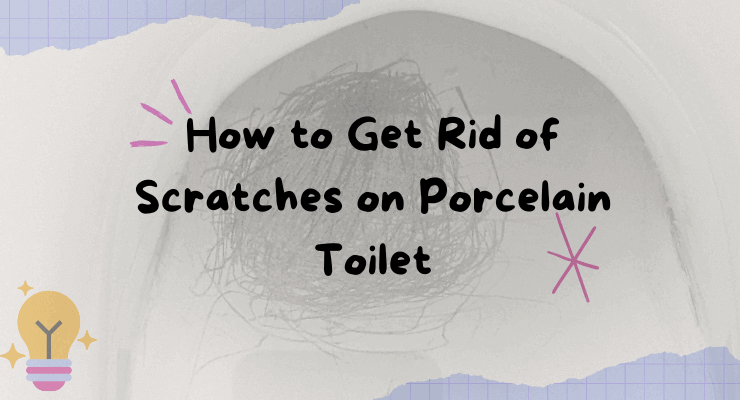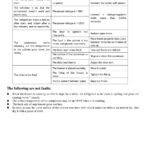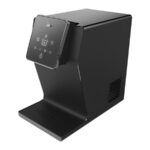To remove scratches on a porcelain toilet, use a pumice stone or porcelain repair kit. Gently rub the stone on the scratch.
Scratches on porcelain toilets can be unsightly and frustrating. These scratches often occur from regular use, cleaning with abrasive materials, or accidental impacts. Restoring your toilet to its original smooth finish is simpler than you might think. Using household items like a pumice stone or a porcelain repair kit can effectively remove these blemishes.
By following a few easy steps, you can quickly and efficiently eliminate scratches, enhancing the appearance and longevity of your toilet. This guide will provide practical tips to ensure your porcelain toilet looks as good as new.

Identifying Types Of Scratches
Scratches on a porcelain toilet can be annoying. Knowing what kind of scratch you have is the first step to fixing it. There are mainly two types: surface scratches and deep scratches. Understanding these helps in choosing the right repair method.
Surface Scratches
Surface scratches are light and shallow. They only affect the top layer of the porcelain. These scratches are often caused by cleaning tools or hard water deposits.
Characteristics of Surface Scratches:
- Appear as thin, light lines.
- Feel smooth to the touch.
- Usually not very noticeable.
To remove surface scratches, you can use mild abrasives. Things like baking soda or toothpaste work well. Gently rub the scratch in a circular motion. Rinse and repeat if needed.
Deep Scratches
Deep scratches penetrate below the surface layer. They are more noticeable and can be felt when you run your finger over them. These scratches are often caused by hard objects or heavy impact.
Characteristics of Deep Scratches:
- Appear as deep, dark lines.
- Feel rough to the touch.
- More visible and may catch dirt.
Fixing deep scratches often requires a porcelain repair kit. These kits contain special fillers and glazes. Follow the instructions on the kit for the best results. Sand the area lightly before applying the filler. After filling, let it dry and then polish to a smooth finish.
Knowing the type of scratch helps in choosing the right repair method. Surface scratches are easier to fix. Deep scratches need more care and the right tools.
Credit: www.reddit.com
Essential Tools And Materials
Scratches on porcelain toilets can be an eyesore. Fixing them requires specific tools and materials. Gather these essentials to restore your toilet’s pristine look.
Cleaning Supplies
Start by cleaning the scratched area. Use the following supplies:
- Soft sponge: Helps to clean without causing more scratches.
- Non-abrasive cleaner: Safe for porcelain surfaces.
- White vinegar: Effective for removing tough stains.
- Microfiber cloth: For drying and polishing the area.
Here’s a simple cleaning step-by-step:
- Mix the non-abrasive cleaner with water.
- Dip the soft sponge in the mixture.
- Gently scrub the scratched area.
- Rinse with clean water.
- Dry with a microfiber cloth.
Repair Kits
Next, you’ll need a repair kit to fix the scratches. Look for these items:
- Porcelain repair kit: Includes materials to fill and seal scratches.
- Sandpaper: Use fine-grit sandpaper for smoothing.
- Small brush: For applying the repair compound.
- Gloves: Protect your hands during the repair process.
| Tool | Purpose |
|---|---|
| Porcelain repair kit | Fill and seal the scratches |
| Fine-grit sandpaper | Smooth the repaired area |
| Small brush | Apply the repair compound |
| Gloves | Protect your hands |
Follow these steps to use the repair kit:
- Clean and dry the scratched area.
- Put on gloves for safety.
- Apply the repair compound with the brush.
- Let it dry as per the kit instructions.
- Use sandpaper to smooth the area.
Pre-cleaning Procedures
Scratches on a porcelain toilet can be unsightly and frustrating. Before you start removing them, it’s important to follow some pre-cleaning procedures. These steps will ensure you achieve the best results and avoid further damage.
Initial Cleaning
First, clean the toilet to remove dirt and grime. Use a mild cleaner and a soft cloth. Avoid harsh chemicals that can damage the porcelain.
- Mix a few drops of dish soap in a bowl of warm water.
- Dip a soft cloth into the soapy water.
- Gently wipe the surface to remove dirt and stains.
Rinse with clean water and dry with a soft towel. Ensure the toilet is free from any residues.
Drying The Surface
It’s crucial to dry the surface thoroughly. Moisture can affect the scratch removal process.
- Use a clean, dry towel to pat the surface dry.
- Ensure there is no water left in the scratches.
Double-check to make sure the area is completely dry before proceeding. A dry surface ensures better adhesion of repair materials.
Removing Surface Scratches
Scratches on your porcelain toilet can be unsightly. Fortunately, you can remove them with simple household items. This section explains two effective methods: using baking soda and applying toothpaste.
Using Baking Soda
Baking soda is a gentle abrasive. It can help remove surface scratches without damaging your toilet. Follow these steps:
- Mix baking soda with water to make a thick paste.
- Apply the paste to the scratched area.
- Let it sit for 10 minutes.
- Scrub gently with a soft cloth.
- Rinse with water and dry with a towel.
This method is safe and eco-friendly. It can make your toilet look new again.
Applying Toothpaste
Toothpaste contains mild abrasives. It can also help remove scratches from porcelain. Here’s how to use it:
- Choose a non-gel, white toothpaste.
- Apply a small amount to the scratched area.
- Rub it in with a soft cloth in circular motions.
- Let it sit for 5 minutes.
- Wipe off with a damp cloth.
- Rinse and dry the area.
This method is quick and easy. It can help restore your toilet’s shine.
Both methods are effective. They require simple ingredients you likely have at home. Removing scratches can extend the life of your porcelain toilet.
Dealing With Deep Scratches
Deep scratches on a porcelain toilet can be unsightly. They can also be challenging to fix. Addressing these scratches requires special tools and materials. This section will guide you through effective methods.
Porcelain Repair Kits
Porcelain repair kits are a go-to solution. They come with everything needed to fix deep scratches.
- Cleaning: Clean the area thoroughly. Use a mild cleaner and a soft cloth.
- Application: Follow the instructions in the kit. Apply the repair compound to the scratch.
- Smoothing: Use the provided tool to smooth out the compound. Ensure it’s level with the rest of the surface.
- Drying: Let the compound dry completely. This may take several hours.
- Finishing: Once dry, sand the area lightly. Use fine-grit sandpaper to blend the repair with the porcelain.
Using Epoxy
Epoxy is another effective method for deep scratches. It forms a strong bond and can restore the surface.
- Preparation: Clean the area first. Dirt and debris can affect the bond.
- Mixing: Mix the epoxy according to the instructions. Use equal parts of resin and hardener.
- Application: Apply the mixed epoxy to the scratch. Use a small tool or a toothpick.
- Smoothing: Smooth out the epoxy. Ensure it is level with the porcelain surface.
- Drying: Allow the epoxy to dry. This may take a few hours.
- Sanding: Sand the area gently. Use fine-grit sandpaper to blend the repair.
Both methods are effective for deep scratches. Choose the one that suits your needs best.
Preventive Measures
Preventive measures are essential to keep your porcelain toilet scratch-free. Regular care can prevent scratches and maintain the toilet’s shine. Implementing a few habits can make a significant difference.
Regular Cleaning
Regular cleaning is the first step to a scratch-free toilet. Clean your toilet at least once a week. Use a mild cleaner to avoid damage. Harsh chemicals can cause scratches and wear down the surface.
Here is a simple cleaning schedule:
| Day | Task |
|---|---|
| Monday | Light cleaning with mild cleaner |
| Wednesday | Quick wipe-down |
| Friday | Deep clean and inspect for scratches |
Using Soft Brushes
Always use a soft brush for cleaning. Hard brushes can scratch the porcelain surface. Opt for a brush with soft, flexible bristles.
Consider these options:
- Soft bristle toilet brush
- Microfiber cleaning cloth
- Non-abrasive sponge
Here is a comparison:
| Tool | Softness | Effectiveness |
|---|---|---|
| Soft bristle toilet brush | High | Very Effective |
| Microfiber cleaning cloth | Very High | Effective |
| Non-abrasive sponge | Medium | Moderate |
Using the right tools ensures a scratch-free surface. Avoid metal brushes and abrasive pads. They can cause permanent damage.
When To Call A Professional
Dealing with scratches on a porcelain toilet can be tricky. Sometimes, it’s best to call a professional. They have the right tools and expertise.
Assessing Damage
First, assess the damage. Small scratches can often be fixed at home. Use a gentle cleaner and a soft cloth. For deeper scratches, a professional may be needed. Professionals can fix cracks and chips effectively.
Cost Considerations
The cost of hiring a professional varies. Simple scratch repairs are usually cheaper. Deep scratches or cracks can cost more. Here is a rough cost estimate:
| Type of Repair | Estimated Cost |
|---|---|
| Minor Scratches | $50 – $100 |
| Deep Scratches | $100 – $200 |
| Cracks and Chips | $200 – $400 |
Consider the cost before deciding. Sometimes, replacing the toilet is more economical.
Maintaining A Scratch-free Toilet
Keeping your porcelain toilet scratch-free requires regular care. This guide helps you maintain a pristine toilet. Follow these steps to avoid common mistakes.
Routine Maintenance
Regular cleaning keeps your toilet looking new. Use a soft sponge or cloth. Avoid abrasive materials. Clean the toilet weekly to prevent stains.
- Use a gentle toilet cleaner.
- Scrub with a soft brush.
- Rinse thoroughly after cleaning.
Replace your toilet brush every few months. This prevents dirt build-up. Keep the toilet dry to avoid water marks. Dry it with a soft cloth after use.
Avoiding Harsh Chemicals
Certain chemicals can damage porcelain. Avoid using bleach and strong acids. These can cause scratches and discoloration. Instead, choose mild cleaners.
| Harsh Chemicals to Avoid | Recommended Alternatives |
|---|---|
| Bleach | Baking soda and vinegar |
| Ammonia | Lemon juice |
| Hydrochloric acid | Diluted dish soap |
Using gentle cleaners helps maintain your toilet’s shine. Always read the product label. Ensure it is safe for porcelain surfaces.
By following these tips, you ensure your toilet stays scratch-free. Regular maintenance and proper cleaning methods are key.
Frequently Asked Questions
Can A Scratched Porcelain Toilet Be Repaired?
Yes, a scratched porcelain toilet can be repaired. Use a porcelain repair kit or epoxy. Clean the area first. Apply the repair compound and let it dry. Sand it smooth if needed.
How To Remove Scratches From Porcelain?
Use baking soda paste to gently buff the scratches. Rinse with water and dry with a soft cloth.
How Do You Get Scuff Marks Off A Porcelain Toilet?
Use baking soda and a damp sponge. Gently scrub the scuff marks until they disappear. Rinse thoroughly.
How Do You Get Scratches Out Of Porcelain Plates?
To remove scratches from porcelain plates, use a paste of baking soda and water. Gently scrub with a soft cloth. Rinse and dry thoroughly.
How Can I Remove Light Scratches?
Use a baking soda paste. Apply it gently with a soft cloth to buff out the scratches.
Conclusion
Removing scratches from a porcelain toilet is straightforward with the right approach. Use gentle abrasives and non-acidic cleaners. Regular maintenance will keep your toilet looking new. Remember, patience and care are key. Follow these steps, and your porcelain toilet will shine without a scratch.
Happy cleaning!




